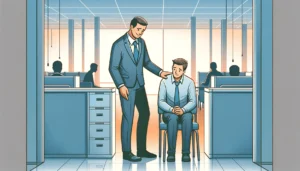Who should decide when and where to work?
- 4 Min Read
Judging by the number of procedures and memos in most organisations, it is HR departments who help decide when and where people should work. By saying this to employees, companies broadcast a strong implicit message: “Work is where and when you are – not what you do”. This can lead to “presenteeism”, which costs companies even more than absenteeism.
- Author: Professor Isaac Getz
- Date published: Feb 12, 2018
- Categories

Judging by the number of procedures and memos in most organisations, it is HR departments who help decide when and where people should work. By saying this to employees, companies broadcast a strong implicit message: “Work is where and when you are – not what you do”. This can lead to “presenteeism”, which costs companies even more than absenteeism.
Ensuring the employee is at his/her desk for 8 hours guarantees nothing but sitting. How can this change?
Chronic disengagement
This was invented during the Industrial Revolution in the Midlands and Scotland. It led to the outstanding increase in economic standards of living, which has multiplied 20-fold between 1825 and 2001. It also led to the chronic employee disengagement. According to Gallup, 68% of UK employees are disengaged, coming to work “in order to leave”, and 21% are actively disengaged.
One way in which HR often address the low engagement level is through work/life balance (WLB). Employees are provided with arrangements and perks which improve their lives: flexible work hours, work from home, leaves of absence, even sabbaticals. And thus, a full loop is closed: from HR procedures deciding for employees when and where to work, WLB decides for them when and where to live.
The problems with work/life balance
Beside the fact that some may consider that it is not a company’s business to organise their lives, there are two fundamental problems with the WLB. First, the emphasis on the “good life” sends an implicit message that work is bad. Yet, such message will hurt companies’ efforts to engage employees, not mentioning to build a “work-is-fun” workplace.
Second, WLB doesn’t alter the way employees are fundamentally treated. True, not worrying about being late to work is appreciated. Yet, it’s not you who decide when and where you work – it’s HR or managers. You are still treated as a child, in need of parents who “know what’s good for you”.
This paternalistic attitude does not always come from where you may think. For example, the management of a large corporation’s R&D unit sought to eliminate timeclocks to offer responsibility to their people. However, the union opposed the measure, arguing the danger of WLB through unaccounted overwork, not mentioning the unpaid extra hours.
Complete employee freedom

There exists a different, more natural way to (self-) organise work than WLB and arrangements negotiated between management and trade unions, handed down to employees. I call it the ‘liberated company’. By that I mean a work environment in which employees have complete freedom and responsibility to undertake any action they – not their superiors or procedures – decide is best for the business.
In a liberated company, employees are responsible and honourable adults who can be trusted to organise their work for the best of their company. Work is also part of life – in fact, the most important part, since we spend the majority of our waking hours there. Hence, not only the office working hours, but the production schedules are decided by the employees themselves.
In many liberated companies, hiring is done by the teams. In some, the annual salary increase is decided by employee representatives, and in a few companies salaries are chosen by employees themselves. Since all those are HR processes, the role of HR staff evolves in these companies too – from deciding for employees, to helping, coaching and supporting. In short, serving them.
Amazing results
I have studied and observed over 100 companies and public institutions, including Michelin, Airbus and two Belgian ministries whose leaders have transformed their traditional organisational models into liberated ones. It is not a model that you can impose, but a philosophy to articulate a company’s specific context by its leader and its employees, often with the help of HR.
The results are amazing. One CEO of a large insurer described speaking to an employee about his holidays and receiving the following answer: “Fine, but too long: couldn’t wait to get back.” Another CEO, of a large US privately-owned advertisement agency, walks daily through the offices at 6pm nudging: “Guys, go home, you have families”.
Like the R&D engineers before, the employees in liberated companies love their work and see it as an important – for some, central – part of their life. But unlike these engineers, they don’t have to hide it. In liberated companies they are able to find their own harmony between what’s meaningful to them in life.
It can be even called a work/life balance.
Author
Professor Isaac Getz,
ESCP Europe Business School, speaker, co-author of “Freedom, Inc.”








